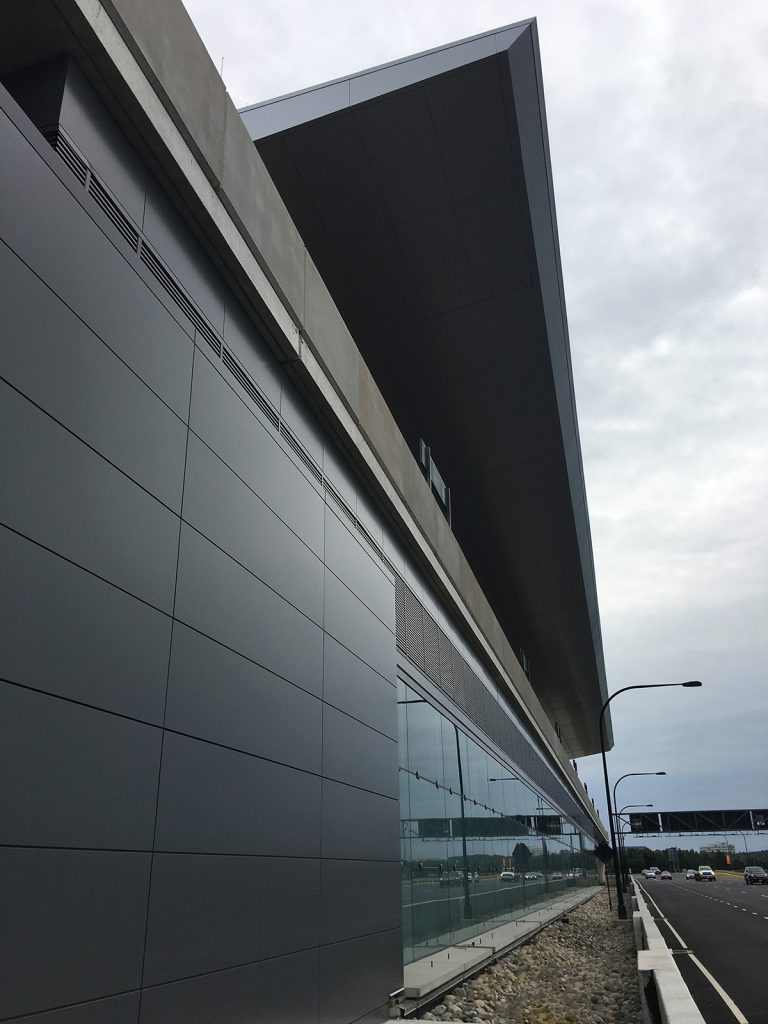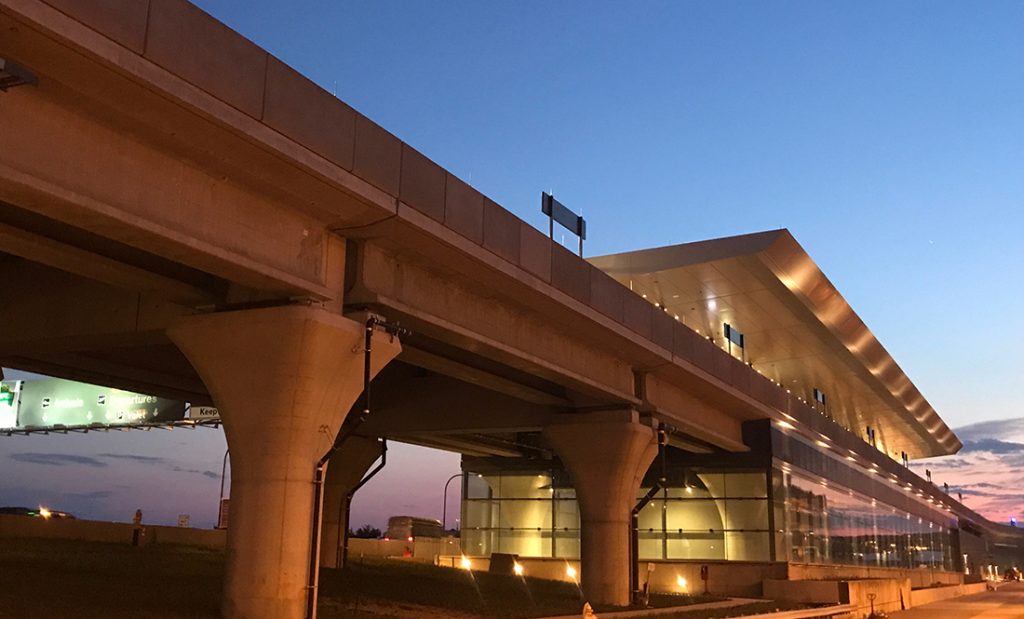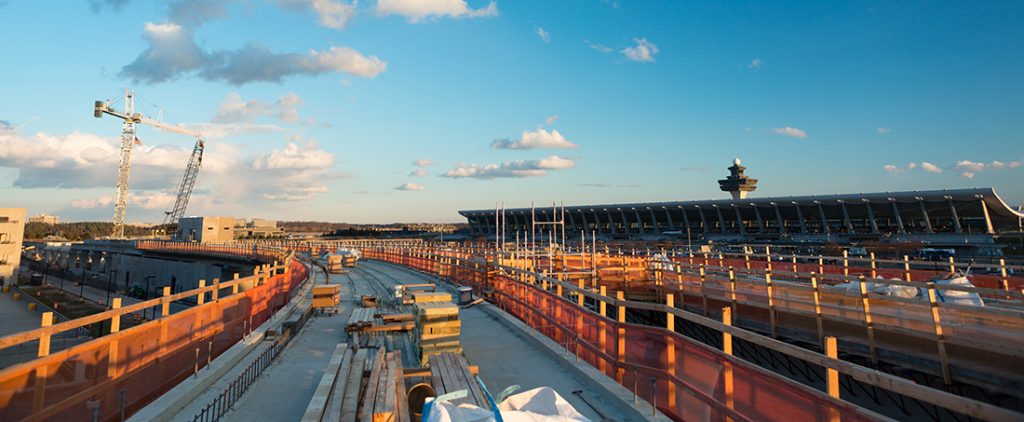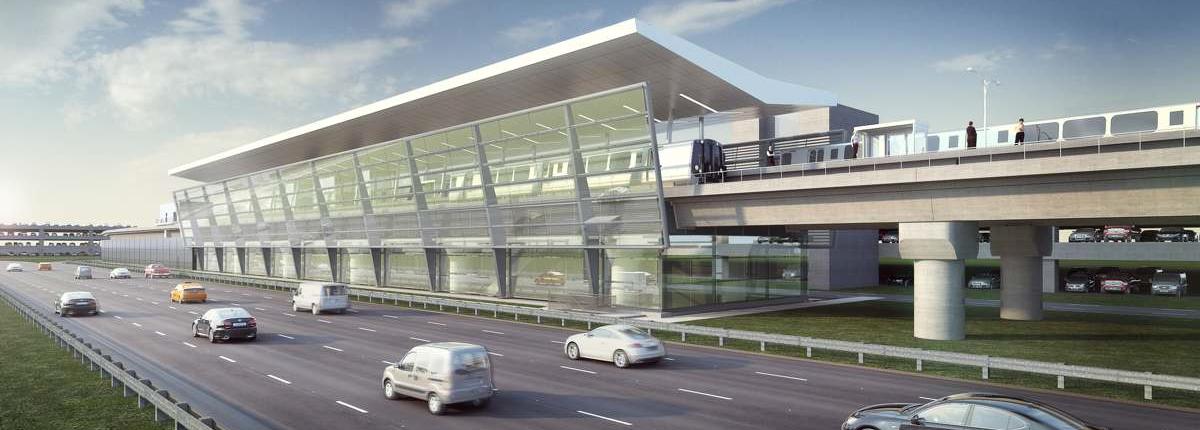The Silver Line Phase 2A project will establish a long-desired Metro rail link between Washington, DC and Dulles International Airport, an airport often regarded as a post-World War II architectural gem. Just as the airport stands out for its one-of-kind look and feel, so will its new Metro station.

As the Metropolitan Washington Airports Authority (MWAA) notes, famed architect Eero Saarinen wanted his modern design for what would become Dulles International Airport to capture “the soul of the airport.” To achieve his goal, he gave the terminal a curved wing-like roof and enormous glass facades between imposing, angled concrete columns that express ideas of flight and movement.
The airport’s new Metro station honors Saarinen’s vision, evoking some of the airport’s architectural aspects with a unique design that stands out in the Washington Metropolitan Area Transit Authority (WMATA) system.

The 70,000-square-foot Dulles International Airport Station features unique concrete, glass and metal panels and finishes that set the station apart. Its Y-shaped canopy will remind station goers of an airplane in flight. The overall look echoes the airport’s sleek flight-style while blending features from MWAA and WMATA.
Passengers who use the station will get an impressive panoramic view of Dulles International Airport thanks to the aerial platform, 50-foot glass elevators, and glass panes that circle three sides of the station. The four glass elevators in the center of the station will also provide views of the station and the airport as they shuttle passengers from the mezzanine to the platform. For their viewing pleasure within the station, WMATA’s “Art in Transit” program plans to install formed metal artwork surrounding four of the station’s columns that have a base of curved glass and uplighting.

“Dulles International Airport Station was designed to be the crown jewel of the Silver Line,” said Adam Wood, a project engineer at CRC. “The team did an amazing job ensuring that the new station reflects Saarinen’s architectural intent when he designed the terminal itself.”
